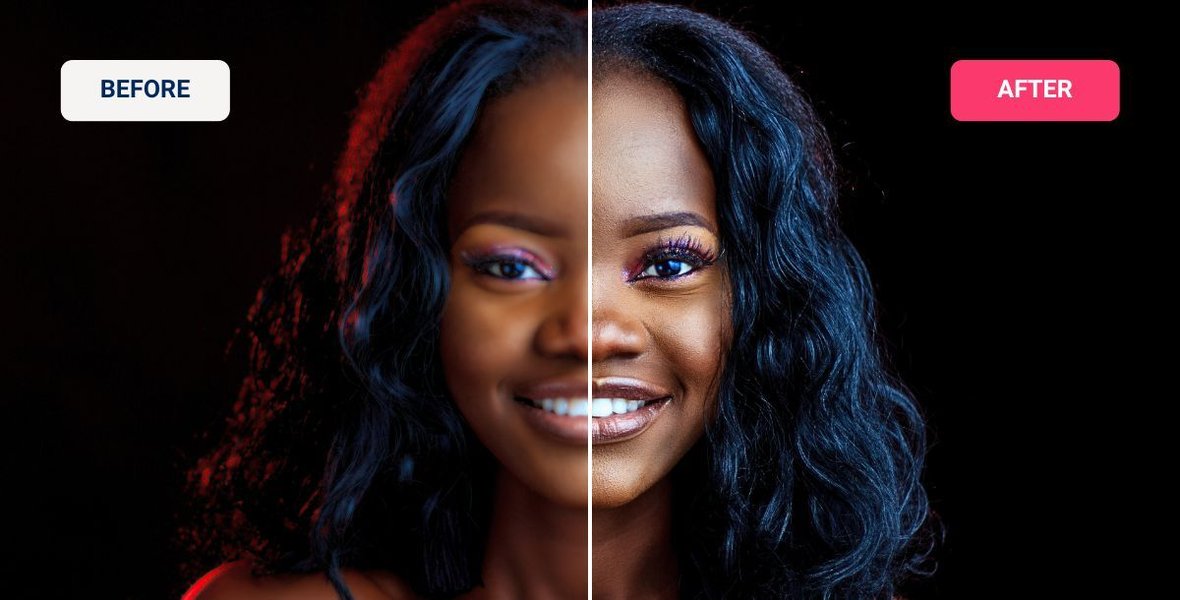
Unlock Image Perfection: How AI Is Revolutionizing Photo Enhancement
Transform blurry, low-resolution photos into crystal-clear masterpieces with cutting-edge AI technology
Key Benefits of AI Image Enhancement
- Resolution magic: Transform low-resolution images into stunning 4K or even 8K quality without loss of detail
- Automated perfection: Fix multiple image issues simultaneously with one-click AI enhancement tools
- Time efficiency: Accomplish in seconds what would take hours of manual editing by professionals
Yes, you can dramatically improve images using AI technology. Artificial intelligence has revolutionized image enhancement by leveraging deep learning algorithms that can analyze, process, and transform photos in ways that were impossible just a few years ago. Modern AI image enhancers can upscale resolution, remove noise, sharpen details, correct colors, restore old photos, and even remove unwanted objects—all while preserving or enhancing the natural qualities of the original image.
How AI Transforms Your Images
AI image enhancement works by using neural networks trained on millions of images to understand what high-quality photos should look like. When you feed a low-quality image into these systems, they can intelligently determine what's missing and add the appropriate details, textures, and improvements.
Core Enhancement Capabilities
Resolution Upscaling
AI can increase image resolution dramatically, sometimes up to 8x the original size. Unlike traditional upscaling which simply stretches pixels (resulting in blurriness), AI analyzes the content and intelligently adds new pixels with appropriate details and textures. This makes low-resolution images suitable for large prints, professional presentations, or high-definition displays.
Quality Enhancement
AI algorithms can enhance overall image quality by analyzing and correcting various aspects simultaneously. They sharpen details, improve focus, enhance edges, and restore clarity to blurry or pixelated images. This makes AI particularly valuable for improving photos taken with low-quality cameras or in challenging conditions.
Noise Reduction
AI can identify and remove digital noise (random color variations) from photos while preserving important details. This is especially useful for images taken in low light conditions where noise is common. Advanced AI models can distinguish between noise and actual image textures, removing only the unwanted elements.
Color Correction
AI can automatically analyze color balance, enhance vibrancy, correct white balance issues, and improve overall color accuracy. These tools can restore natural colors to faded photos or enhance colors to create more impactful images without the artificial look that often comes with manual color adjustments.
Old Photo Restoration
AI can restore damaged, faded, or aged photographs by analyzing what's missing and intelligently reconstructing details. This includes removing scratches, tears, stains, and addressing color fading or yellowing that occurs with age.
Smart Object Removal
Some advanced AI tools can seamlessly remove unwanted objects from photos by analyzing the surrounding areas and generating appropriate fill content that matches the image's style and patterns.
Comparative Analysis of AI Image Enhancement Tools
There are numerous AI image enhancement tools available today, each with its own strengths. Below is a radar chart comparing some of the most popular options across different performance metrics:
The radar chart above compares five popular AI image enhancers across seven key performance metrics. VanceAI excels in noise reduction, while LetsEnhance leads in resolution upscaling. Canva offers superior user-friendliness and processing speed, making it ideal for quick enhancements. Picsart provides excellent color enhancement and a comprehensive feature set, while Deep-Image.ai delivers exceptional detail preservation for professional applications.
Feature Comparison of Popular AI Image Enhancers
| Tool | Max Upscale | Free Version | Batch Processing | Formats Supported | Best For |
|---|---|---|---|---|---|
| VanceAI | 8x | Yes (limited) | Yes | JPG, PNG, WEBP | Real estate photography, e-commerce |
| LetsEnhance | 16x | Yes (limited) | Yes | JPG, PNG, WEBP, TIFF | Professional photography, printing |
| Canva | 8x | Yes | No | JPG, PNG, SVG | Social media, graphic design |
| Picsart | 4x | Yes | Yes (premium) | JPG, PNG, WEBP | Social media, mobile photography |
| Pixelcut | 4x | Yes (limited) | Yes | JPG, PNG | Product photography, e-commerce |
| Deep-Image.ai | Up to 300MP | Yes (limited) | Yes | JPG, PNG, TIFF, RAW | Professional photography, advertising |
| PhotoGrid | 4x | Yes (no watermark) | No | JPG, PNG | Quick social media enhancements |
| Spyne AI | 4x | Yes (limited) | Yes | JPG, PNG, WEBP | Real estate, automotive imagery |
AI Image Enhancement Technologies and Applications
The following mindmap illustrates the various AI technologies used in image enhancement and their applications across different fields:
This mindmap showcases how AI image enhancement spans multiple technologies and has applications across diverse industries. From photography to e-commerce to medical imaging, AI tools are transforming how we capture, restore, and present visual information.
Before and After: The Power of AI Enhancement
The visual transformation achieved by AI image enhancement tools can be remarkable. Here are some examples that demonstrate the power of these technologies:

Before and after transformation using AI enhancement technology. Notice the improved detail, color, and overall quality.

AI can not only enhance existing elements but also generate or improve backgrounds in photos.

Professional AI editing workflow showing how multiple enhancements can be applied simultaneously.
How to Enhance Images with AI: Step-by-Step
This comprehensive guide by a professional photographer walks through multiple AI image enhancement techniques and tools, demonstrating practical applications and workflows for both beginners and advanced users. It covers everything from basic enhancements to more complex transformations, with real examples that show the capabilities of modern AI technology.
Frequently Asked Questions
References
- VanceAI Image Enhancer - AI-Powered Photo Enhancement Tool
- LetsEnhance - Professional Image Upscaling for Photographers
- Fotor One-Tap Enhance - Automatic Photo Enhancement
- Canva AI Image Enhancer - Design Platform with AI Tools
- Pixelcut AI Image Upscaler - Mobile-Friendly Enhancement
- Upscale.media - Free AI Image Upscaler
- Deep-Image.ai - Professional-Grade AI Enhancement
- PhotoGrid Image Enhancer - Free Tool Without Watermarks
- Picsart AI Image Enhancer - Social Media Optimization
Recommended Searches
Last updated April 6, 2025